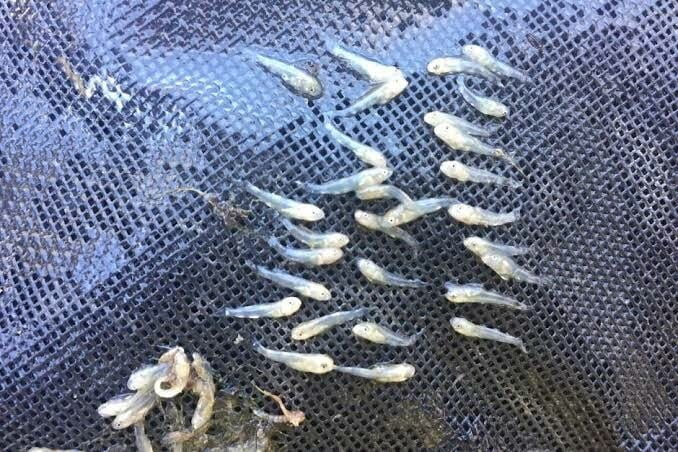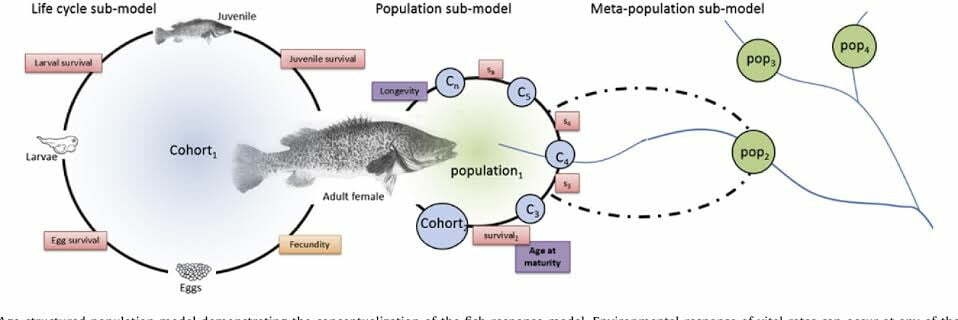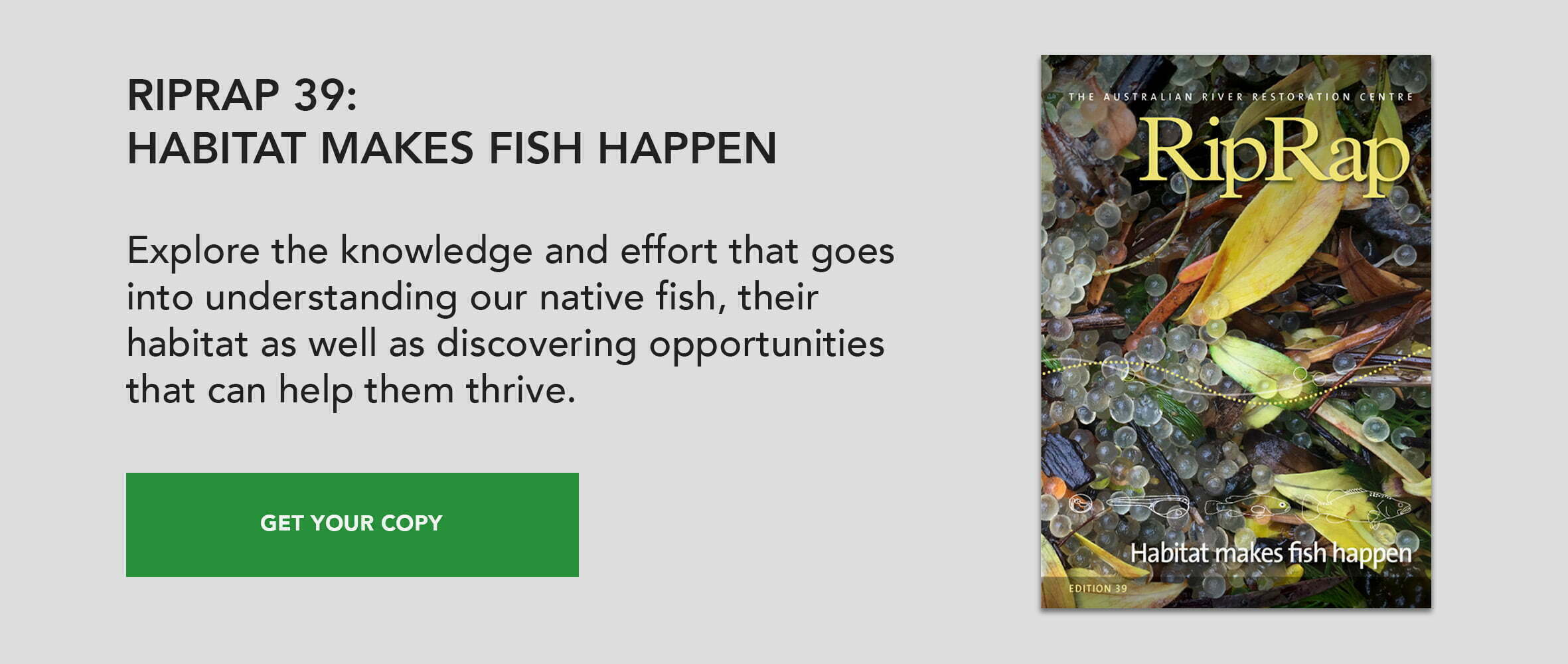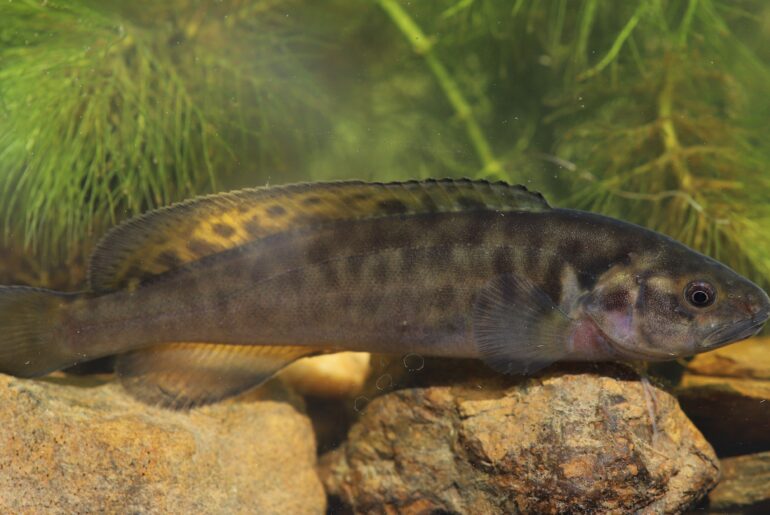Native fishes of the Murray-Darling Basin (MDB) have suffered substantial declines and, overall, populations are considered to be at about 10 per cent of levels prior to European settlement. Delivering environmental water under the Murray-Darling Basin Plan is a key action to restore river health and fish populations. When we deliver water for environmental purposes, however, there is a need to demonstrate potential benefits for fish and other biota.

To get an estimate of how many fish we have under different management scenarios, we need to undertake serious monitoring. As of now, if monitoring is undertaken at all, it costs time and money, and can often only provide answers after the management has occurred. Often, there is a need to quickly indicate the likely benefits of management action, so that comparisons and decisions can be made about which actions will deliver the greatest benefits. If only we had a crystal ball to forsee the likely outcomes…
Population models:
Well, this is where population models can help. Using our best available science and knowledge, ecological models can be developed that are simplified representations of what we believe happens in the real world. Combining knowledge of fish reproduction, survival and movement with some nifty mathematics (see Figure 1), allows models to be developed that represent the dynamics of populations for a particular species, under different conditions or management options.
Models can predict likely outcomes from particular management scenarios which then allows those outcomes to be compared. Traditionally, most modelling for fishes has been used to predict commercial catches, or to test the viability of threatened populations. By extending these concepts, predictions can be made for any management action. Population models have been used to determine stocking regimes for restoring trout cod populations, and for improving size restrictions for the recreational harvest of Murray cod.
Different fishes or life stages: different responses
How do fish respond to flows? Well, this depends on the life history stages and strategies of the fish species in question, as well as the specific flow attributes. Fish populations include a variety of life stages from eggs, larvae, juvenile and sub-adults, through to mature breeding adults; with each stage responding differently to flows. For example, some species have drifting egg and larval stages with large-scale juvenile and adult migrations, compared to benthic (bottom dwelling) species that lay adhesive eggs, exhibit parental care and are relatively sedentary. Consequently, each life history stage must be managed separately, and different flows may be required to support spawning, migrations to inundate banks or instream benches to boost river productivity (food for young fish), or to enhance egg or larval drift.

Making a population model for fish in the MDB
Developing fish population models and modelling a range of flows allows for many management options to be compared and the benefits maximised. A new project ‘Native fish population models’ funded by the Murray-Darling Basin Authority and being undertaken by the Arthur Rylah Institute for Environmental Research will do just that. The models being developed are based on the best conceptual understanding of the species’ ecology and life cycle needs, with knowledge drawn from literature review and expert workshops. This work is being closely undertaken with waterway managers to ensure the scenarios used are realistic and practical. The models will include options for assessing the impact of a range of other threats such as lien fish and instream barriers affecting different fish species.
Using the models
Species’ population responses to a range of flow scenarios, including in-channel and over-bank inundations, both natural and managed flow events will be modelled. This will include watering options across the whole MDB; importantly taking into account any regional ecological differences, especially between the northern and southern basin.
The outputs of the modelling will assist the development of practical water management recommendations that maximise environmental flow benefits to a range of fish species. It is anticipated that these models will be important tools to assist native fish management at multiple scales; for both annual and longer-term planning into the future, at both individual sites and across the MDB. As a useful communication tool, the models will also help to demonstrate the potential benefits of environmental water management for fish to a range of community and government audiences.
Which fish species?
Population models are currently being developed for eight different MDB native fish species: Golden perch, Silver perch, Murray cod, Trout cod, Macquarie perch, Southern pygmy perch, Olive perchlet and Murray hardyhead. These species have been selected to represent a range of habitats and different flow requirements (e.g. in-channel, wetland specialists; flow-cued spawners), sizes and different management needs (e.g. threatened species or angling species). In addition, a population model has also been developed to assist with the management of introduced carp.
Who’s involved?
This project is funded by the Murray-Darling Basin Authority and undertaken by the Arthur Rylah Institute for Environmental Research (DELWP, Victoria) in partnership with a wide range of experts from the South Australian Research and Development Institute, NSW Fisheries, Kingfisher Research, Murray Local Land Services, Griffith University, University of Canberra, La Trobe University/Murray-Darling Freshwater Research Centre, University of Melbourne, Charles Sturt University and several consultants.
To read this and other great stories like it, you can download a copy of RipRap 39 magazine. Click below to see more.
Related stories:
Population models help assess risk for threatened Murray crayfish




